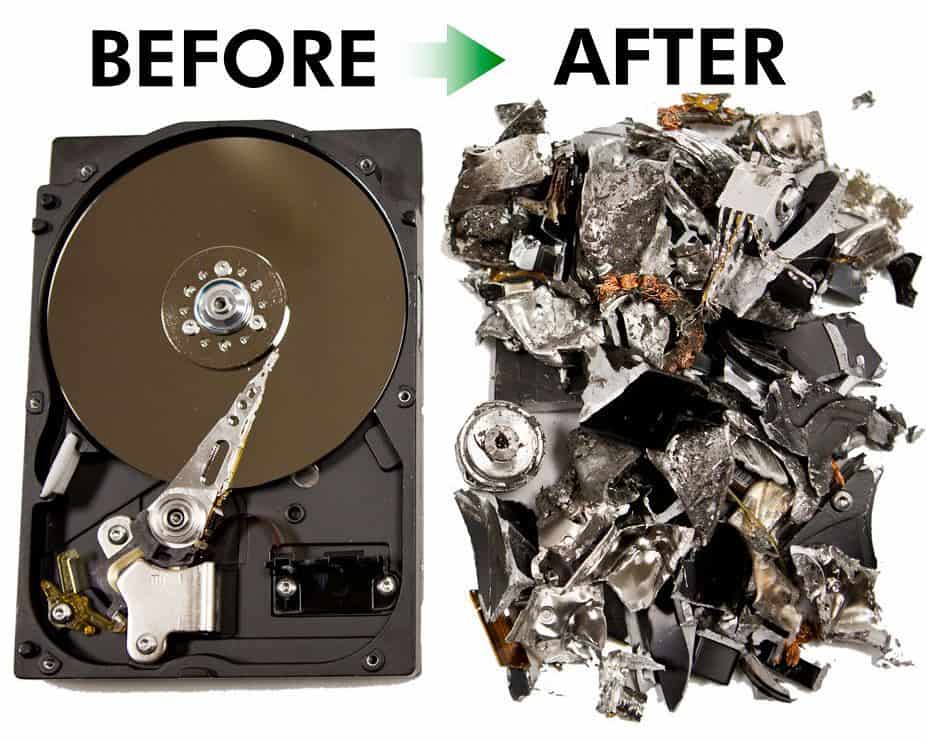Optimizing Cyber Security through Advanced Data Destruction Approaches
Wiki Article
The Value of Effective Data Damage Practices in Shielding Sensitive Information and Ensuring Computer Safety
In an age where data violations are progressively typical, the significance of effective data destruction methods can not be overemphasized. Executing robust data devastation methods not only reduces these risks however additionally lines up with legal compliance demands, making certain that companies support their reputation and foster client trust fund.Understanding Data Damage
Understanding data devastation is crucial in today's digital landscape, where delicate details can quickly be compromised. Effective data devastation involves not just ensuring yet erasing documents that information is irretrievable with comprehensive techniques. This process is important for organizations that take care of personal client info, copyright, or inner documents, as any type of violation can lead to severe financial and reputational repercussions.
Information devastation includes different techniques, consisting of shredding physical media, degaussing magnetic storage space devices, and employing software-based options that overwrite data multiple times. Each method serves a certain function and should line up with the level of sensitivity of the details being dealt with. As an example, physical destruction is commonly favored for hard disks including very personal information, while software program techniques may be enough for less delicate information.
Additionally, sticking to market requirements and guidelines, such as the General Data Protection Regulation (GDPR) or the Medical Insurance Portability and Liability Act (HIPAA), is essential for compliance and to minimize lawful dangers. Organizations should develop a durable information destruction plan, train staff members on best methods, and frequently audit their treatments to make sure that all sensitive details is disposed of safely and efficiently.
Risks of Inadequate Practices
Poor data devastation methods expose companies to considerable threats that can have far-ranging repercussions. When delicate info is not properly taken care of, it stays vulnerable to unapproved access, which can cause data violations and identity burglary. Such incidents not just compromise the safety of individuals however additionally taint the organization's track record, resulting in a loss of client trust and prospective economic repercussions.Additionally, regulatory compliance is increasingly strict in several industries. Failing to comply with data damage laws can result in large penalties and lawsuits versus companies. These penalties can strain monetary sources and divert focus from core company operations.
Additionally, the abuse of residual data can result in intellectual building theft or company espionage, jeopardizing affordable advantages (data destruction). The influence of insufficient data devastation expands past prompt financial losses; it can also result in lasting damages to brand name integrity and market position

Organizations must recognize that data safety and security is not exclusively regarding preventing breaches; it also encompasses the responsible management of information throughout its lifecycle. Neglecting reliable information devastation procedures can have catastrophic implications, underscoring the need for durable procedures to alleviate these dangers.
Finest Practices for Data Destruction
Executing efficient data destruction practices is essential for guarding delicate info and maintaining compliance with governing requirements. Organizations ought to adopt a multi-faceted approach to make certain that information is irretrievable, thus preventing unapproved gain access to and prospective breaches.First, information must be categorized based upon level of sensitivity, allowing companies to apply appropriate damage approaches customized to the level of risk. For digital data, utilizing software-based data-wiping tools that comply with sector standards can effectively overwrite existing information. Physical damage methods, such as shredding or degaussing, are critical for gadgets that store sensitive details, making sure complete elimination.
Establishing a clear information retention policy is crucial, detailing how much time different sorts of info should be maintained before damage. Normal audits of data storage space systems are also needed to identify obsolete or unnecessary data needing elimination.
Furthermore, training workers on the value of information devastation and the particular procedures to adhere to fosters a culture of safety within the company. Maintaining paperwork of data devastation refines provides accountability and sustains compliance with internal policies and external regulations. By sticking to these ideal techniques, companies can significantly reduce the dangers related to data exposure.
Legal and Compliance Considerations

Failure to follow these laws can result in serious fines, including significant penalties and reputational damage. Organizations must Learn More apply a robust data devastation plan that aligns with these lawful frameworks and provides clear standards on the proper approaches of information disposal, whether physical shredding or electronic wiping.
In addition, maintaining documents of information destruction activities is necessary for showing conformity throughout audits or evaluations. By prioritizing legal and compliance considerations, organizations can improve their information protection posture and foster count on with clients and stakeholders, eventually contributing to official site a more protected data monitoring environment.
Benefits of Effective Data Destruction
Effective data devastation techniques expand past plain conformity; they offer substantial benefits to companies that prioritize them. By making certain that delicate info is irretrievably ruined, organizations reduce the danger of data breaches and the possible economic effects related to them. This positive method not only safeguards versus unapproved gain access to yet additionally improves the overall trustworthiness of the organization in the eyes of customers and stakeholders.Executing robust information damage methods, such as physical damage of storage tools or sophisticated data cleaning methods, adds to the strengthening of a company's cybersecurity position. data destruction. It reduces the possibility of intellectual residential property theft and shields proprietary info, thereby maintaining an one-upmanship in the marketplace

Final Thought
To conclude, reliable data damage methods are crucial for protecting sensitive info and improving general computer system protection. By implementing extensive techniques such as degaussing, software application, and shredding overwriting, organizations can reduce the dangers related to unauthorized access and data violations. Adherence to regulatory standards, consisting of GDPR and HIPAA, further strengthens compliance and safeguards against lawful effects. Inevitably, a dedication to robust data destruction strategies cultivates a society of obligation, thus strengthening an organization's cybersecurity stance and keeping customer count on.
Report this wiki page